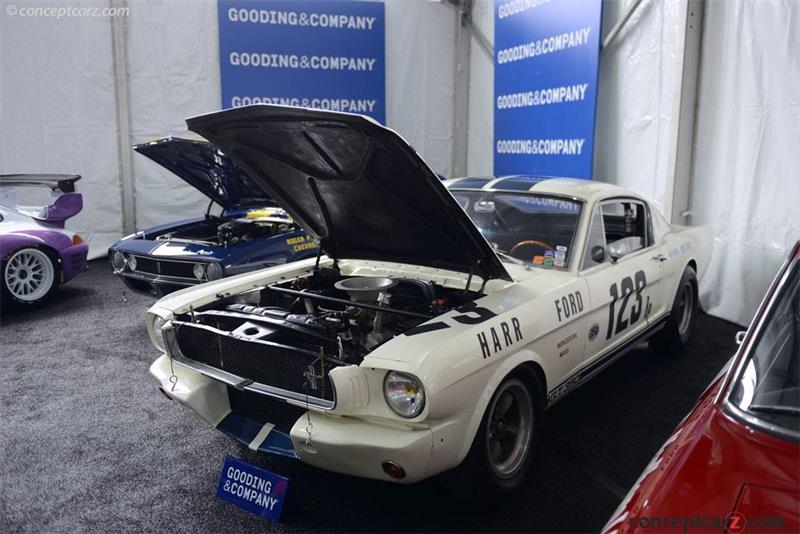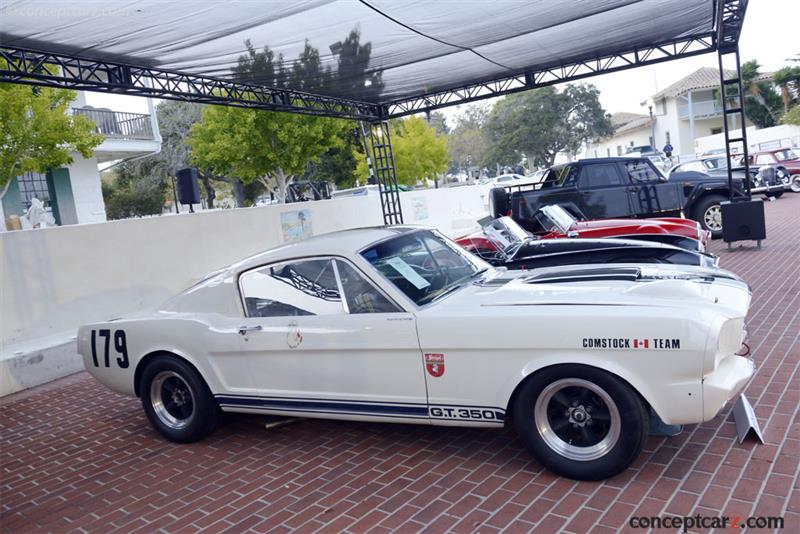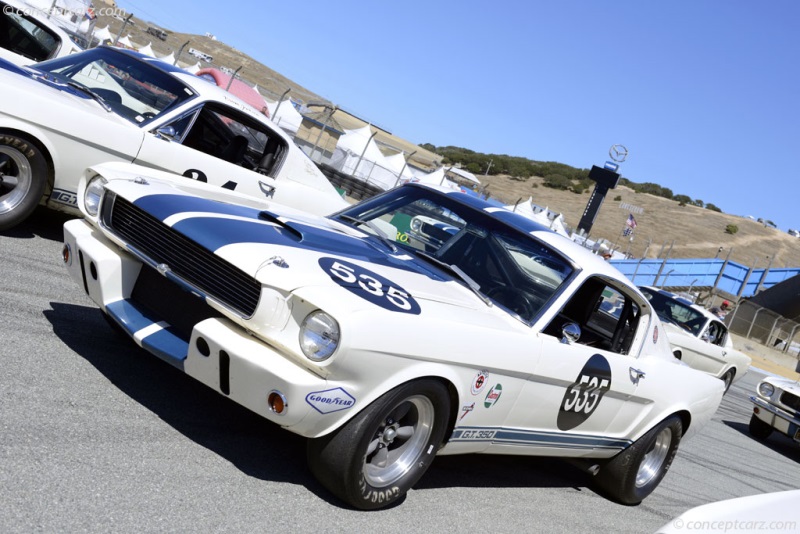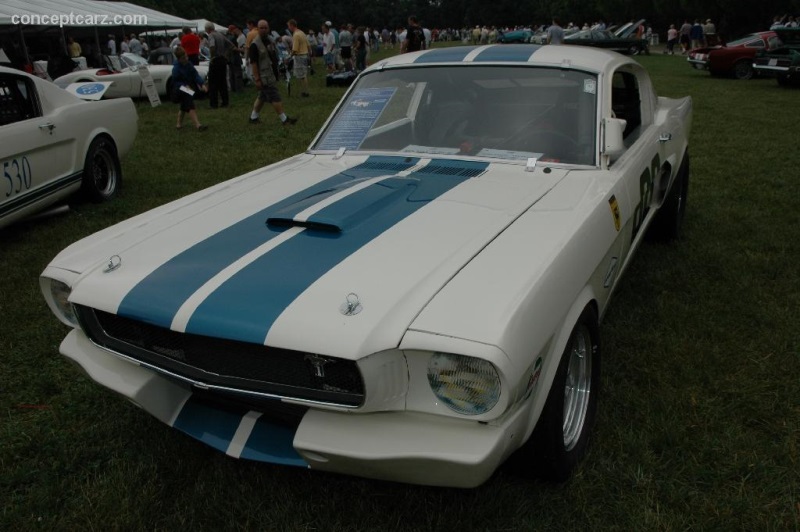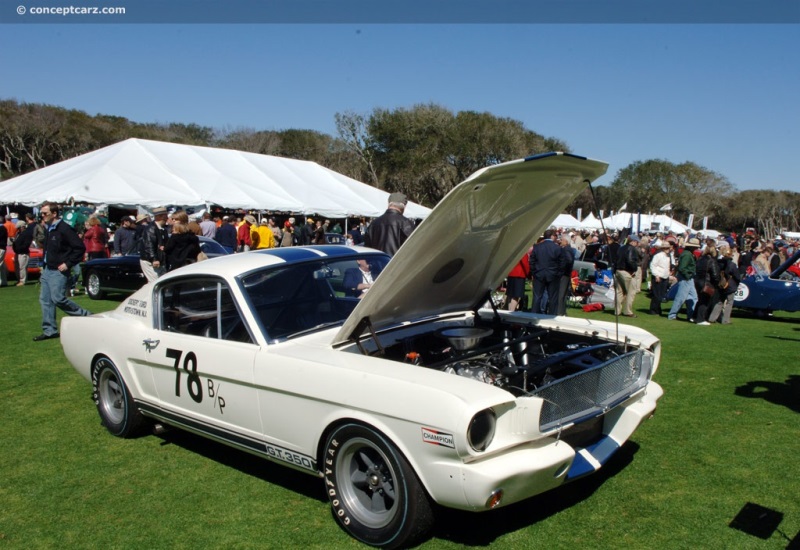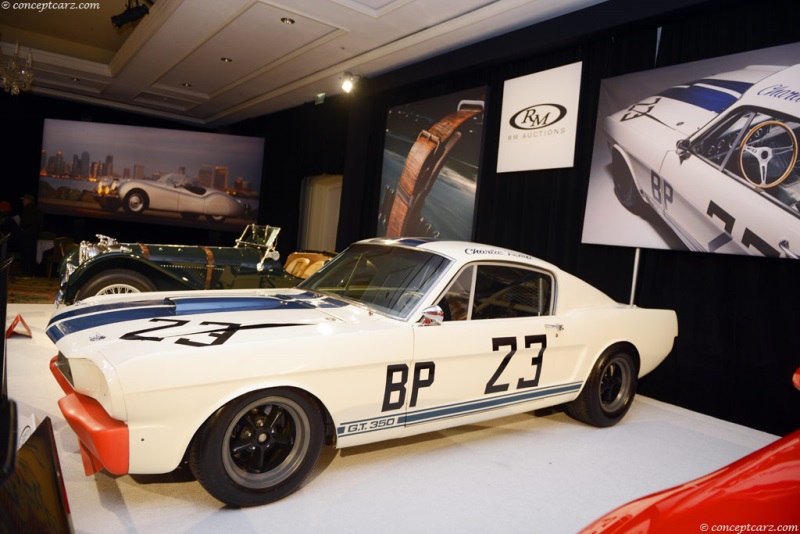Carroll Shelby's abilities and talents as a race car driver were complemented by his drive, ambition, and tenacity as a mogul of the car building industry. His timing was impeccable, approaching AC Cars about Cobra chassis just as their engine supply had ended, and walking through Ford's front door just as the company had decided to implement 'Total Performance.' The 'Total Performance' initiative was a multi-front attack on many of the world's most legendary racing arenas and venues. Of course, many of those doors were wedged open by Shelby's racing exploits, which included a victory at the 1959 24 Hours of LeMans. 
HardTop
Chassis #: SFM5R108
View info and history
Auction entries : 4In America, SCCA road racing was popular and competitive. The Ford Motor Company wisely recognized that the newly introduced Mustang would have even more success in the showroom if its performance image was established on the track. Shelby, who was already associated with Ford's performance initiatives through his AC Cobras, Ford GT40, and the USRRC/USAC King Cobras, was tasked with transforming the Mustang into a potential 'B' Production SCCA racer. Using the same 289 CID V8 as the Cobra, three early production Mustang GT fastbacks were pulled from the assembly line and shipped to Shelby American in California (two competition models and one street version). After the initial testing, Shelby placed an order for cars from the San Jose assembly plant. SCCA required that a minimum of 100 examples be built before the beginning of the year. Since Shelby was unable to handle this capacity, Ford agreed to supply Mustangs to Shelby's specifications, and Shelby picked through the Ford parts catalog to specify the basic package. Simple upgrades were made in the Shelby American shop, a project headed by Chuck Cantwell. The production cars and all the R-models were specially built-in sequence at Ford's San Jose, California factory in Wimbledon White with Black interiors. The 271 horsepower K-code engines were backed by aluminum case Borg Warner T-10M four-speed transmissions, and performance components included the nine-inch rear axle with Fairlane station wagon drum brakes, 'export' shock tower brace, and sintered metallic brake pads and linings. The front suspension received Koni shocks, and the upper A-arm chassis pivots were lowered an inch, along with a one-inch front sway bar and quick ratio steering kits. The K-shaped 'export' brace was augmented with another bar joining the tops of the shock towers. In the back, the leaf spring suspended rear axles received traction bars and Detroit 'no-spin' locking differentials.Non-essential materials were removed, including the rear seats. Body panels, bumper, and the engine cover with coil air intake scoops were built from fiberglass and the windows were plexiglass. The fenders were flared to accommodate wider, 7-inch wheels. Beginning with the 'High-Performance' (HiPo) 4.7-liter V8 engine with 271 horsepower, Shelby added a larger, four-barrel Holley carburetor helping to boost power to 306 bhp. The 'R' competition cars produced between 340 and 360 horsepower.
HardTop
View info and historyThe interiors had a fiberglass shelf where the rear seats had been. There was a wood-rim steering wheel, and a Shelby tach and oil pressure gauge installed in a dash-top mounted pod. All GT350s had three-inch competition-style lap belts with the inner belt mounting bolts used to secure a driveshaft safety hoop. Fifteen cars arrived at Shelby devoid of side or rear windows, defrosters, heaters, headliners, upholstery, sound deadening material or insulation. These were the first of the 34 (as few as 33) R-models built, intended for competition during the rapidly approaching racing season. Using the production GT350 as a base, Shelby concentrated on improving power, reliability, and handling. Engines were blueprinted in Shelby's engine shop, while Valley Porting Service extensively modified the heads. Tri-Y headers were built by Cyclone handling the exhaust, and a Holley four-barrel carburetor on a Cobra high-rise aluminum intake manifold was installed. Due to the increase in power, an oil cooler was added for reliability, mounted behind the special high capacity radiators. Since more airflow was required, the R-models received a unique and distinctive front body apron constructed from fiberglass with a deep air intake flanked by brake cooling air scoops. American Racing 15x7 five-spoke wheels sent power from the engine to the ground. The use of plexiglass side windows with aluminum frames saved 25 pounds over the stock side glass. In the back, a special Plexiglass rear window was installed, which fitted the rear light opening with a two-inch gap at the top to exhaust air from the interior. The window allowed air to smoothly flow over the body and, reportedly, helped increase the R-models' top speed by five miles an hour. Two standard Mustang fuel tank bottoms were fabricated to form a 34-gallon baffled fuel tank, and a four-point roll bar was installed.Built in three separate batches during 1965 and early-1966, the R-models were completed with the re-installation of the engines. The engines were often installed irrespective of the car from which they originally came. This created an identification issue that was solved with a brand new Shelby American data plate featuring a newly assigned chassis number.
HardTop
Chassis #: SFM5R108
View info and history
Auction entries : 4All Shelby GT350s received a new hand-stamped Vehicle Identification Number, or VIN, plate. This was riveted over the Ford stamped VIN number on the driver-side inner fender apron. Per Federal law, two VIN stamps were present on all vehicles, with the new Shelby VIN number stamped on the passenger side inner fender apron as well. The new Shelby VIN started with SFM, for Shelby Ford Mustang, followed by the number 5 which indicated the 1965 model year. Three digits followed the 5 which were the Shelby consecutive production sequence number (known today as the car number). Following the construction of the first 31 cars, Shelby added the letters 'S' or 'R' after the 5 and before the consecutive production sequence to designate whether the car was built as a street model or competition model.During the production lifespan of the GT350, Shelby made numerous 'running changes.' Some early examples received 16-inch Cobra steering wheels, which were problematic for some customers as it rubbed their thighs while driving. To resolve this issue, a smaller 15-inch wheel was installed. A few cars wore Blue Lemans Stripes from the factory while others received them at the dealer. The battery relocation from the engine compartment to the trunk improved weight distribution, but after battery acid fumes entered the passenger compartment, the battery's location was returned to the engine compartment. Three different styles of hoods were used as well. All fiberglass with a plenum that used a screen to help filter incoming air, an all fiberglass hood with an open plenum, and a steel hood with a fiberglass overlay.Early GT350 wheels measured 15 x 5 ½ while later examples had 6-inch wheels. Early examples were painted argent silver and attached using chrome lug nuts. An optional Cragar wheel was available that measured 15 x 6 and constructed from an aluminum center attached to a chrome-plated steel rim. This wheel was wrapped with Goodyear Blue Dots made specifically for the GT350. 
HardTop
Chassis #: SFM5R106
View info and history
Auction entries : 1All R-Models were Wimbledon white with blue stripes. Buyers would acquire the Shelby Mustang GT350 R as a turn-key race car directly from the Ford dealer for $5,950, a $1,500 premium over the regular production Mustang. These vehicles were immediately ready for SCCA competition and they quickly proved successful in SCCA B/Production racing, dominating their first season and nearly obliterating other marques and models from the annual SCCA runoffs, then known as the American Road Racing Championship, for the next three years.Due to the relatively high price, production of the GT350 R remained low as many customers preferred to convert their road car instead, often with Shelby sourced components. The GT350 R made its racing debut on February 14th of 1965, driven by Ken Miles at Green Valley Raceway in Texas. The car placed second overall and first in the B Production class. By the end of the season, the GT350 had won five of the six SCCA divisions. The list of successful drivers includes Mark Donohue, Pedro Rodriguez, and Jerry Titus. 
HardTop
Chassis #: SFM5R106
View info and history
Auction entries : 1For the 1966 model year, Rental company Hertz ordered over 1,000 examples of the GT350, and most were finished in gold with black stripes. Customers quickly discovered this was a fairly inexpensive opportunity to go racing, soon earning the GT350 H the nickname, the 'rent-a-racer.' To resolve this issue, after the first eighty examples were delivered, Hertz fitted the cars with an automatic gearbox in place of the four-speed manual.Shelby American modified the Ford Mustang from 1965 to 1967 and Ford assumed the duties from 1968 to 1970.
by Daniel Vaughan | Mar 2021
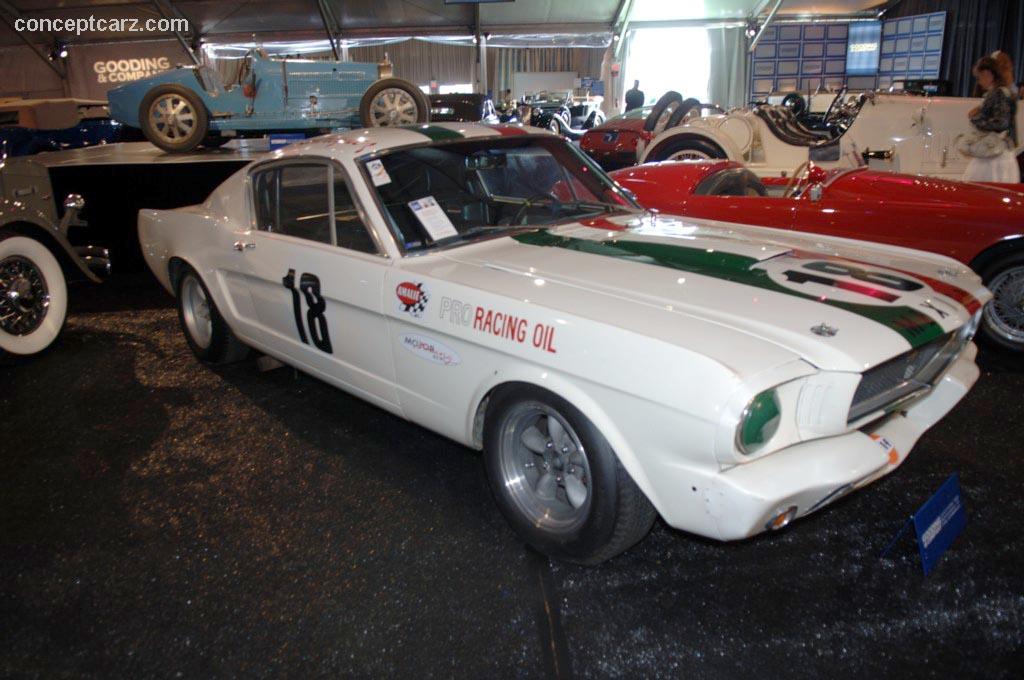
HardTop
Chassis #: SFM5R108
View info and history
Auction entries : 4
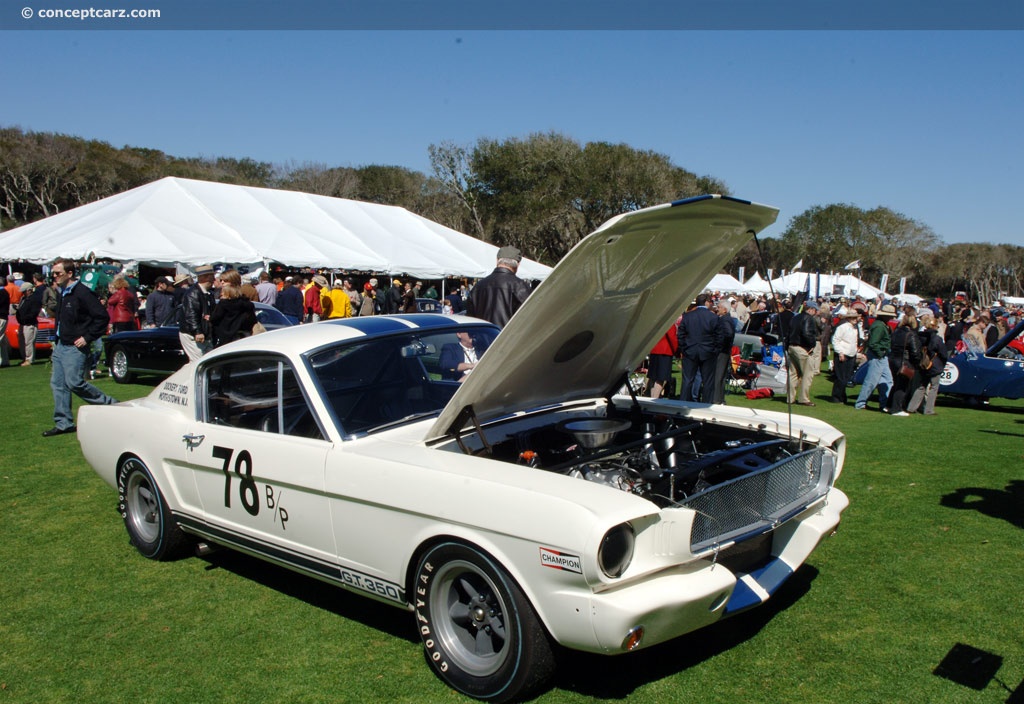
HardTop
View info and history
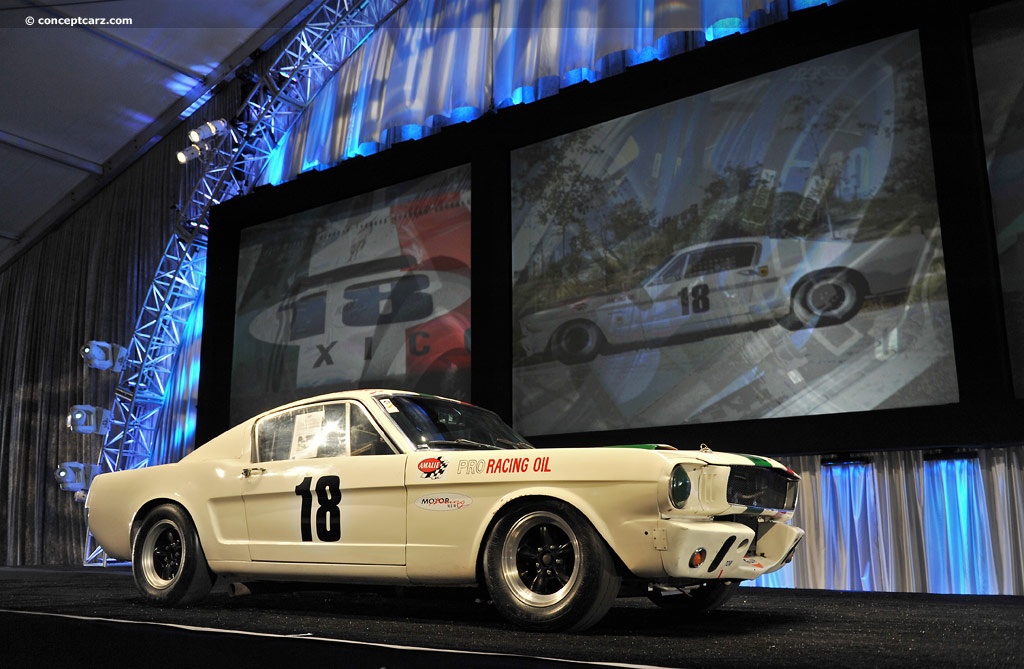
HardTop
Chassis #: SFM5R108
View info and history
Auction entries : 4
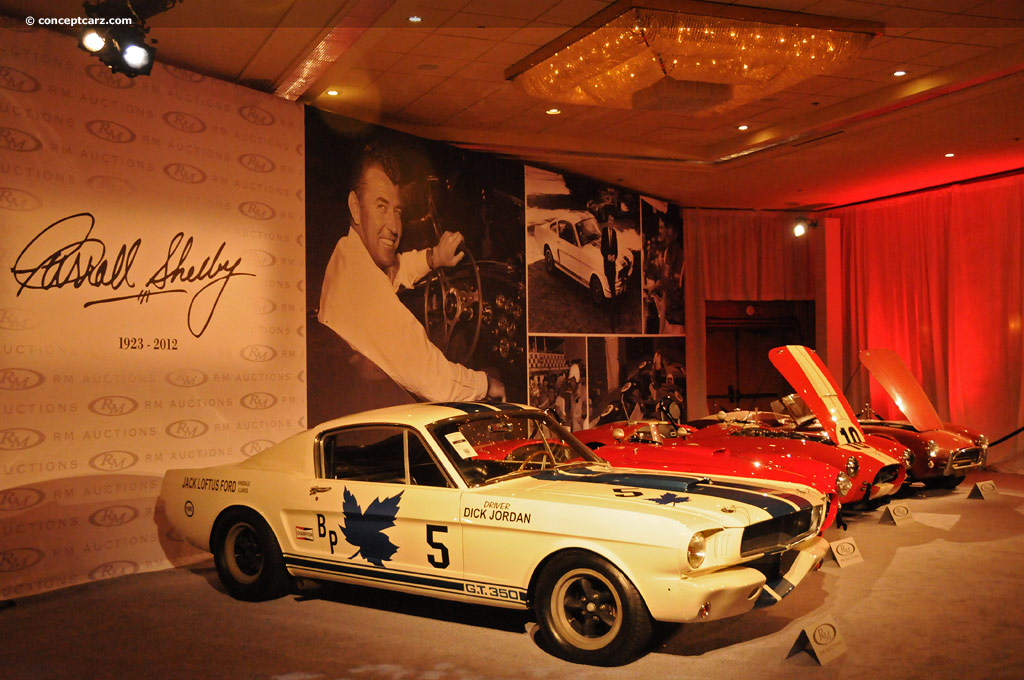
HardTop
Chassis #: SFM5R106
View info and history
Auction entries : 1
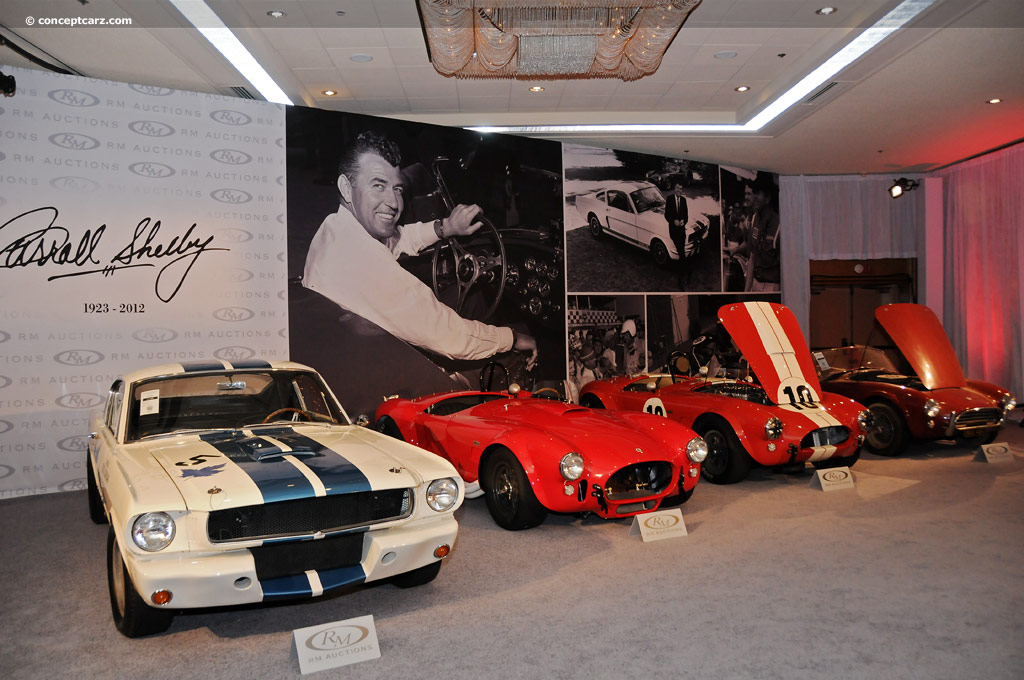
HardTop
Chassis #: SFM5R106
View info and history
Auction entries : 1
by Daniel Vaughan | Mar 2021
Related Reading : Ford Mustang History
The Mustang was introduced at the 1965 New York Worlds Fair, Mustang Mania instantly swept the country, and a new automotive market segment was created - the 22 or better known as the ponycar. Though its mechanical underpinnings descended from the Falcon, the Mustang was completely different. It was a compact, tight, clean package weighing in at a modest 2,550 pounds - a departure from the ever-enlarging....
Continue Reading >>
Continue Reading >>
Related Reading : Ford Mustang History
The Ford Mustang first appeared in 1964 and was immediately popular for its style and its capabilities. The largest engine offering of the time was the 289 V-8 K-code small block engine which was sufficient but enthusiasts wanted and demanded more power. The base engine was a six-cylinder power plant. The body style configurations included coupe, convertible and fastback. In its first year of....
Continue Reading >>
Continue Reading >>
Related Reading : Ford Mustang History
A pillar of American automotive lore, the Mustang is the vehicle the brought sporting dash and styling at a price that almost everyone could afford. Always extraordinarily attractive, the Mustang has been capturing the hearts of drivers for nearly 40 years. Introducing a whole new breed of automobile, the pony car, Ford wasnt content to stand on the sidelines while others jumped ahead. Rather than....
Continue Reading >>
Continue Reading >>
Similarly Sized Vehicles
from 1965
Similarly Priced Vehicles
1965 Shelby Mustang GT 350 R Competition Vehicle Profiles
Recent Vehicle Additions
Related Automotive News

RM Auctions Amelia Island Preview - 2014
0
RM Auctions, the worlds largest auction house for investment-quality automobiles, will hold its Amelia Island, Florida, sale on March 8th at the Ritz-Carlton.
As the official auction house of the Amelia Island Concours dElegance, RMs...

Renowned Racing Legends Grant Exclusive Nod to the Rolex Monterey Motorsports Reunion for New Run Groups
As the Rolex Monterey Motorsports Reunion celebrates the Golden Anniversary of historic racing at Montereys WeatherTech Raceway Laguna Seca, the illustrious gathering also honors the history and significant achievements throughout time. It seems fitting...

Mecum Reveals The Ken Miles Shelby GT350 R-Model For Indy This May
John Atzbach Collection Includes Shelbys, Lamborghinis and Thousands of Collectibles to be Offered at Dana Mecums 33rd Original Spring Classic
WALWORTH, Wis. – March 11, 2020 – The awe-inspiring collection of John Atzbach—highlighted...
RRDC VOTES IN 26 NEW MEMBERS FOR 2015
HILLIARD, Ohio (Oct. 23, 2015) - Twenty-six race-car drivers and motorsports professionals have been voted into the Road Racing Drivers Club in 2015. The group includes 11 Regular Members from the open-wheel and sports-car racing ranks, 10 Associate...

HURLEY HAYWOOD HONORED WITH RRDC'S 2014 PHIL HILL AWARD
DAYTONA BEACH, Fla. (Jan. 24, 2014) - Hurley Haywood, winner of more endurance classics than any other driver in racing history, was honored by the Road Racing Drivers Club with the 2014 Phil Hill Award. RRDC president Bobby Rahal presented Haywood...
RRDC VOTES IN 37 NEW MEMBERS FOR 2013
HILLIARD, Ohio (Nov. 7, 2013) - Thirty-seven race-car drivers and motorsports professionals have been voted into the Road Racing Drivers Club in 2013. The group includes 13 Regular Members from the open-wheel and sports-car racing ranks, 20 Associate...
























